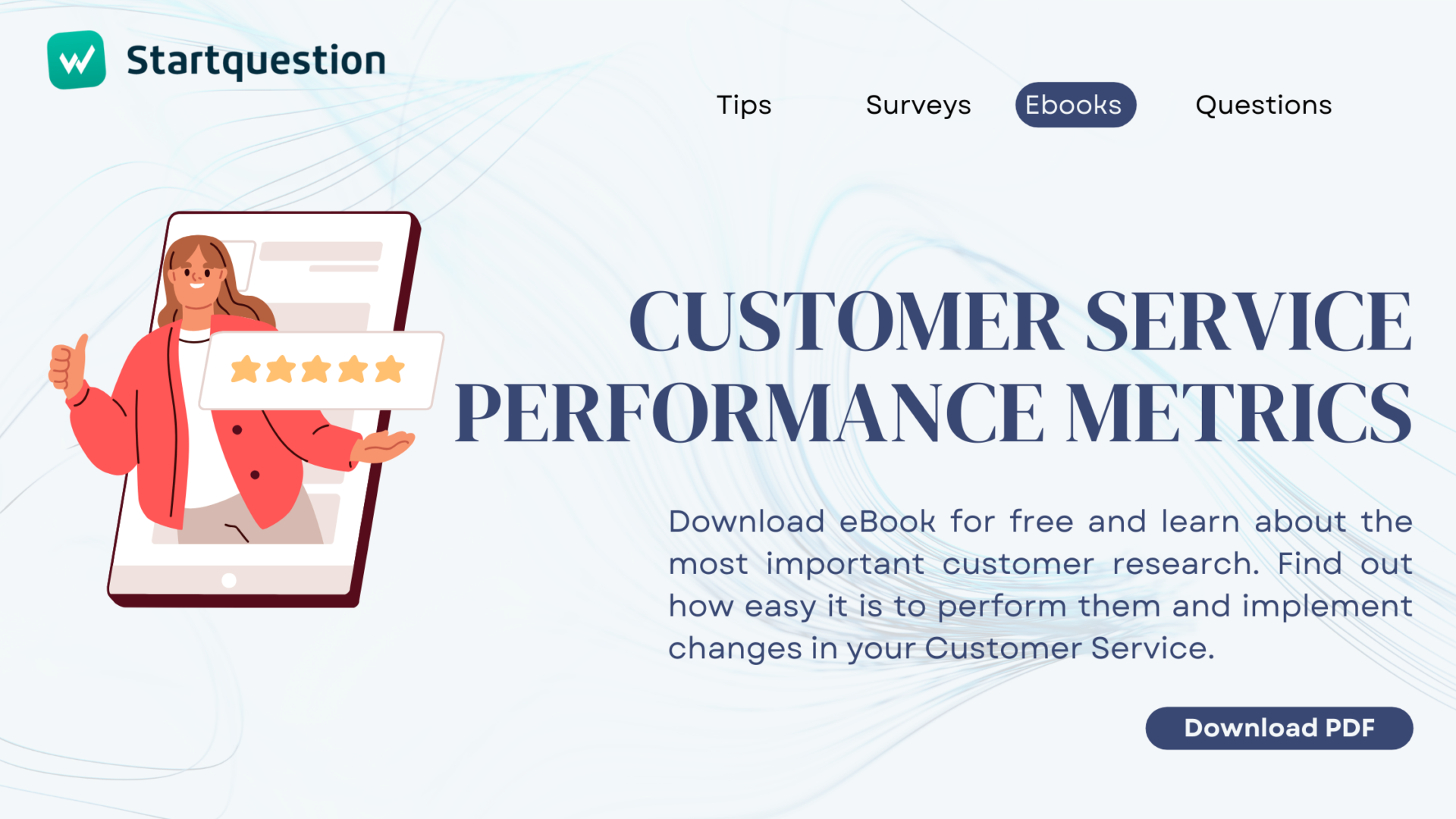In the ever-changing field of education, combining technology and academia is revolutionizing traditional approaches to learning and research. One significant advancement is the incorporation of AI survey tools into student projects. Although student satisfaction surveys have been in use for a long time, the emergence of AI has brought new dimensions to how students interact with these surveys, particularly when creating their theses.
This article aims to simplify the complexities of student surveys, explain the role of AI tools, and provide valuable insights into how academic research can be optimized through these innovations.
How to start with surveys? Check out our free ebooks!
Understanding the Academic Survey Landscape
It’s crucial to distinguish between a student satisfaction survey that educational institutions usually conduct (student feedback on educational experience during the school year) and surveys crafted by students for their theses.
Institutional satisfaction surveys serve as thorough feedback mechanisms, covering various aspects of the student experience, like teaching methods, course evaluation, homework assignments, learning environment, teaching staff, course material and general student engagement.
In contrast to research conducted by educational institutes, surveys designed for theses are customized research instruments that concentrate on gathering data aligned with specific academic goals. Understanding this difference paves the way for students to make the most of survey tools in their research pursuits.
Surveys for Master and Bachelor Degree Thesis
This template will help you get information on how parents can provide support for their children’s educational development.
Surveys for Master and Bachelor Degree Thesis
This template will help you get information on how parents can provide support for their children’s educational development.
Creating Surveys for Academic Purposes
In both bachelor’s and master’s theses, research is how students can explore uncharted territories within their chosen fields. It allows them to apply theoretical knowledge gained from coursework to practical situations and, in doing so, contribute to the ongoing discourse in their respective disciplines. In the process, students can unveil fresh perspectives, expand the boundaries of current knowledge, and make discoveries.
The Role of Surveys in Gathering Feedback
Surveys are essential components of research methodologies, especially in the social sciences.
They provide a structured and systematic method of gathering data from a specific audience, which can be analyzed quantitatively or qualitatively. In the context of thesis research, surveys are invaluable tools for gathering insights, opinions, and experiences from participants, enhancing the research’s depth and breadth.
Advantages of Using Surveys in Student Theses
- Quantifiable Data:
Surveys provide a quantifiable dimension to research, enabling students to analyze numerical data and draw statistically significant conclusions. This adds a layer of objectivity to the findings, strengthening the overall validity of the research.
- Broad Data Collection:
Surveys allow for the collection of data from a wide and diverse pool of participants. This inclusivity enhances the generalizability of the findings, making them applicable beyond the specific sample surveyed.
- Efficiency and Scalability:
With the advent of online survey platforms, conducting surveys has become more efficient and scalable. Students can reach a larger audience without the constraints of geographical limitations, facilitating comprehensive data collection.
- Structured Inquiry:
Surveys offer a structured and standardized approach to inquiry. This ensures consistency in data collection, enabling students to ask questions in a way that minimizes bias and facilitates clear analysis.
- Insight into Participant Perspectives:
Surveys provide a direct avenue into the perspectives and experiences of participants. This firsthand insight is invaluable, especially in disciplines where understanding human behavior, opinions, or attitudes is crucial.
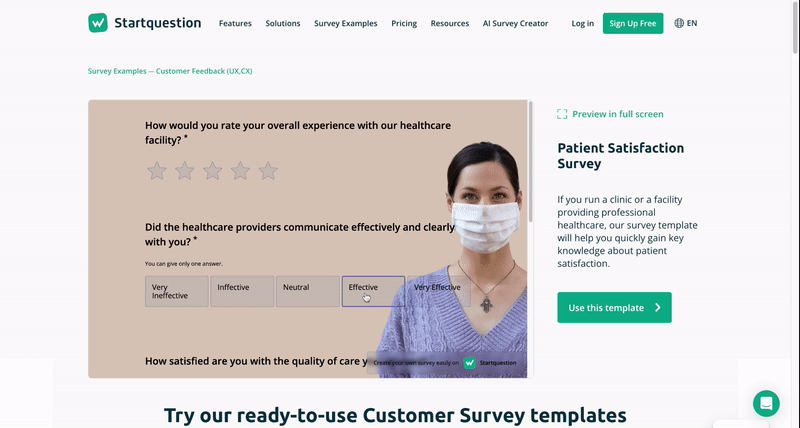
- Versatility in Questioning:
The versatility of survey questions allows for a range of inquiry, from closed-ended questions for quantitative analysis to open-ended questions that encourage qualitative responses. This flexibility caters to the specific needs of the research.
How to Create a Student Survey? Practical Guide
Undertaking research and creating a thesis is a significant task for any student in their academic journey. Surveys can be an effective tool for enhancing the depth and scope of their research.
This guide will provide insights on leveraging surveys effectively in thesis research. Additionally, it will give an example survey with a set of questions.
Incorporating Student Survey Questions into Thesis Research
Define Research Objectives
Clearly articulate the research questions or objectives that the survey aims to address. This ensures that the survey is focused and aligns with the overall goals of the thesis.
Identify Target Participants
Define the target audience for the survey. Consider demographics, characteristics, or experiences that are relevant to the research. This specificity ensures that the collected data is directly applicable to the thesis.
Choose Survey Methodology
Decide on the type of survey methodology: quantitative, qualitative, or a combination of both. Determine whether the survey will be conducted through online platforms, in-person interviews, or a mailed questionnaire.
Select Survey Tool
Choose appropriate online survey software or survey platform. Popular options include SurveyMonkey, Google Forms, or Startquestion. Ensure that the selected tool aligns with the research goals and allows for easy data collection and analysis.
Design Survey Questions
Survey structure matters. Craft clear and concise questions that directly address the research objectives. Pay attention to the structure of the questions, ensuring they are unbiased and avoid leading participants to specific answers.
Pilot Testing
Before deploying the survey widely, conduct a pilot test with a small group to identify any potential issues with clarity, comprehension, or survey flow. Adjust questions based on feedback.
Administer the Survey
Distribute the survey to the target participants using the chosen method. Clearly communicate the purpose of the survey, the expected time commitment, and the confidentiality of responses.
Collect and Analyze Data
As responses come in, systematically gather feedback and organize the data. Depending on the survey tool, utilize built-in analytical features or export the data for more in-depth & detailed analysis.
Draw Conclusions
Analyze the survey responses in the context of the thesis research objectives. Draw conclusions based on patterns, trends, or significant findings within the actionable insights.
Integrate Findings into Thesis
Incorporate the survey findings into the thesis, providing context, analysis, and interpretation. Clearly articulate how the survey results contribute to addressing the research questions or objectives.
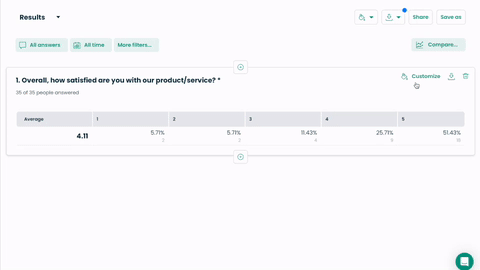
Example Survey for a Thesis
Objective: To assess students’ satisfaction levels with online learning platforms provided by an educational institute and identify areas for improvement.
Student Survey Questions to Ask in a Questionnaire
Demographic Information:
a. What is your age?
b. What is your academic major?
c. How many online courses are you currently enrolled in?
Overall Satisfaction:
On a scale of 1 to 5, how satisfied are you with the online learning platforms provided by the university?
User-Friendliness:
How would you rate the user-friendliness of the online learning platform interface?
- Very user-friendly
- Somewhat user-friendly
- Neutral
- Somewhat challenging
- Very challenging
Content Delivery:
To what extent do you find the online course content engaging and informative?
- Highly engaging
- Moderately engaging
- Neutral
- Slightly engaging
- Not engaging at all
Technical Support:
Have you encountered any technical issues while using the online learning platforms?
- Yes
- No
Improvement Suggestions:
Please provide any suggestions or comments on how the online learning platforms could be improved to better meet your needs.
AI Survey for Students: Why You Should Give It a Try?
TL;DR: It’s time-saving. Looking for further explanations? We’ve got it for you.
Embarking on the creation of survey questions can be a daunting task, especially for students delving into research. Here are compelling reasons why students should leverage AI for the formulation of survey questions:
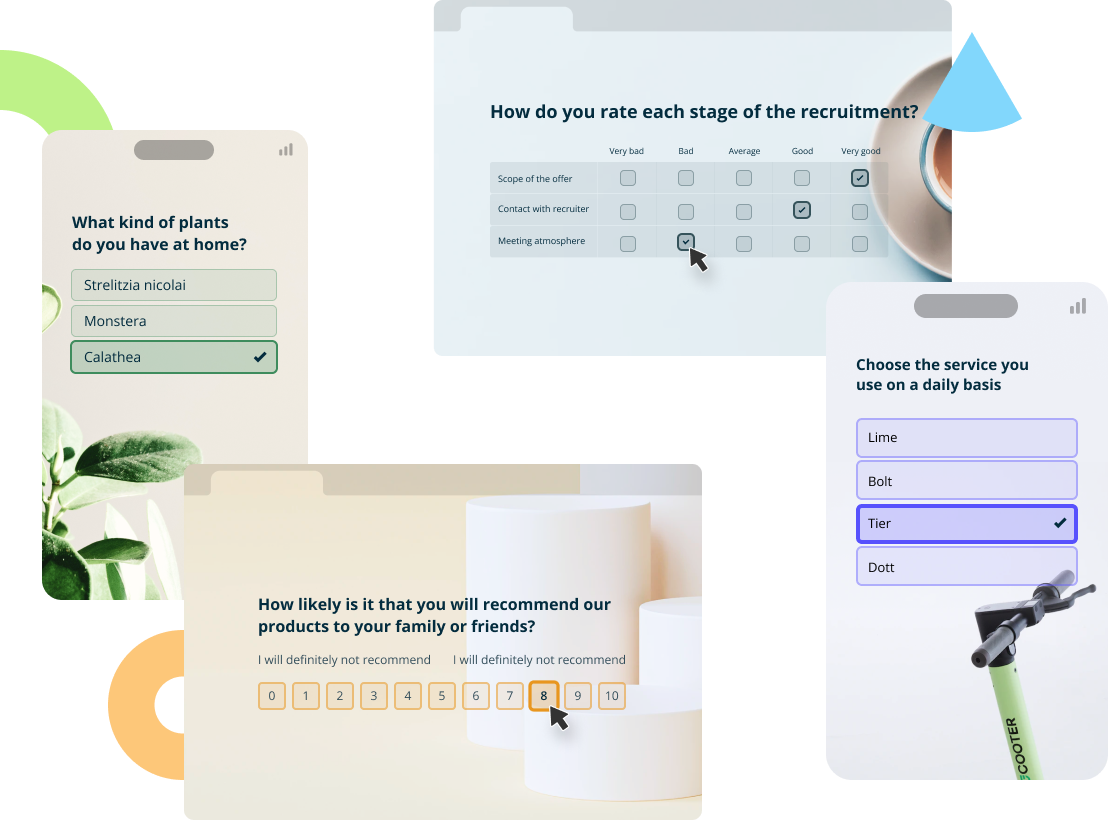
8 Reasons Why AI Can Assist You in Creating Intelligent Surveys
1. Efficiency and Time Savings
AI excels in automating the process of question generation. By swiftly analyzing existing data and patterns, AI can produce relevant survey questions efficiently, saving students considerable time. This efficiency is crucial, especially when faced with tight research deadlines.
2. Guidance for Novice Researchers
For students new to the research landscape, crafting effective survey questions can be challenging. AI serves as a valuable guide, providing suggestions and frameworks for questions based on established best practices. This guidance is particularly beneficial for those navigating their first research endeavors.
3. Tailored to Research Objectives
AI ensures that survey questions are precisely aligned with the research objectives. Through its analytical capabilities, AI can generate questions that are tailored to the specific focus of the study, eliminating the guesswork and ensuring the questionnaire’s relevance.
4. Reduced Bias in Question Formulation
AI algorithms are designed to detect and mitigate biases in language and expression. By using AI for question creation, students can minimize unintentional bias in their surveys, leading to more objective and reliable data collection.
5. Diverse Question Formats
Crafting a well-rounded survey often involves using a mix of question formats. AI survey creators can generate questions in various formats, including multiple-choice, Likert scales, and open-ended. This diversity enhances the comprehensiveness of the survey instrument.
6. Adaptability to Audience Characteristics
AI has the capability to adapt questions based on respondent characteristics. Whether it’s tailoring questions for different demographics or adjusting the complexity of the language used, AI ensures that questions are appropriate and resonate with the surveyed audience.
7. Continuous Improvement through Feedback
As students iteratively work on their surveys, AI can provide feedback on question clarity, structure, and potential biases. This iterative process allows for continuous improvement, refining the survey instrument to ensure its effectiveness.
8. Mitigation of Survey Start-up Challenges
Initiating a survey is often the most challenging phase. AI mitigates this challenge by offering a starting point for question creation. Students can build upon the AI-generated questions, adding their unique context and nuances.
Leveraging AI for survey question creation addresses the initial hurdle of starting a questionnaire. From efficiency gains to tailored guidance, AI serves as a valuable ally for students, ensuring that the survey questions align with research objectives and contribute to robust data collection.
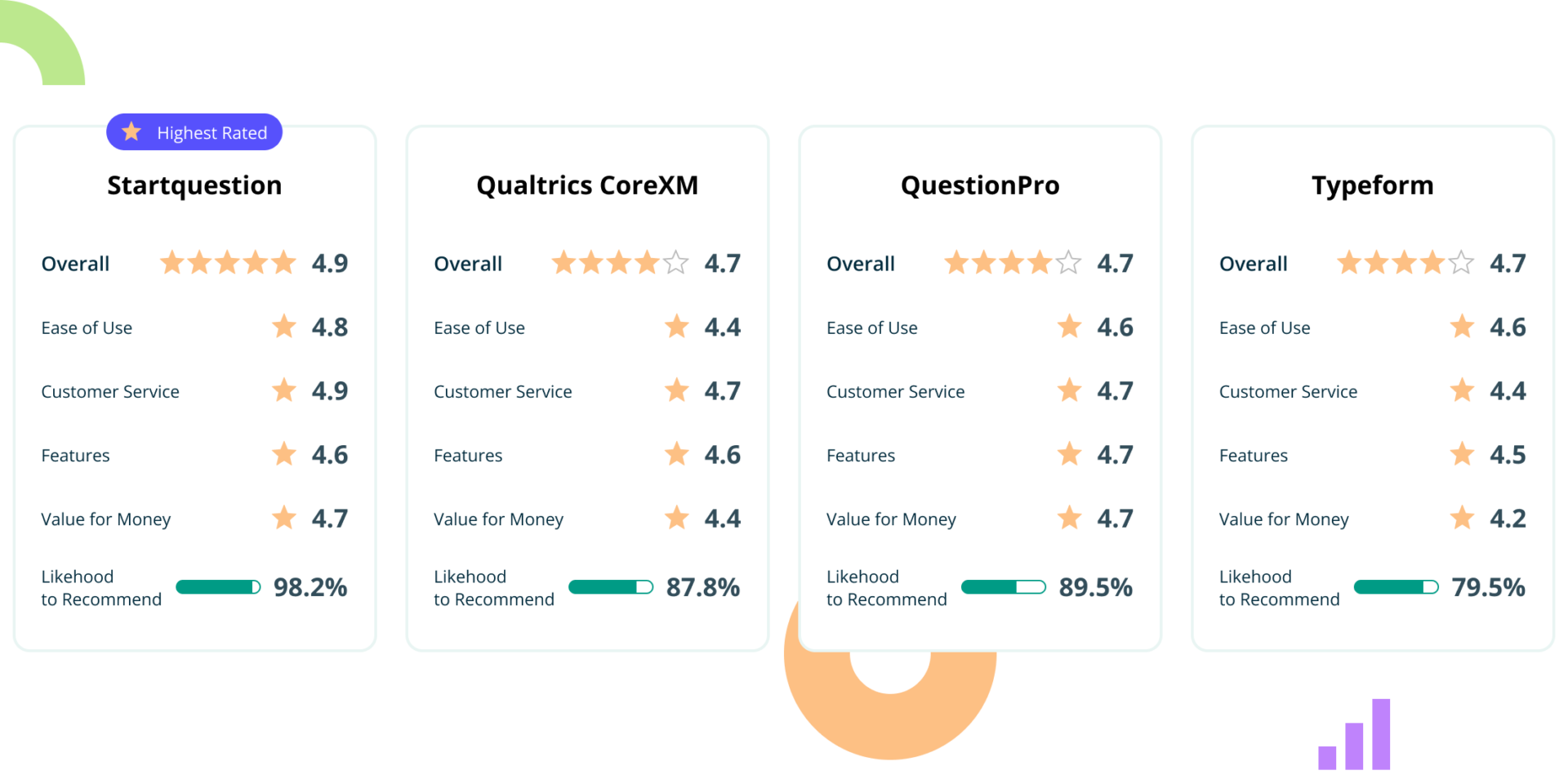
And now the best part. You can try right away our…
Completely Free AI Survey Creator
Creating surveys can be a time-consuming and tedious task. However, with our AI-generated survey creator, you can save time and effort. The intelligent algorithms and automated processes make it quick and easy to create surveys, allowing you to focus on analyzing the results and taking action.
When using the Startquestion survey creator, you can expect high-quality surveys. The advanced algorithms optimize the survey structure, question phrasing, and response options. It ensures that your surveys are well-crafted and effectively gather accurate and valuable insights from your respondents.
Even if you lack technical expertise, there’s no need to worry. Our creator is designed with a user-friendly interface that makes it simple for anyone to create professional surveys. The intuitive navigation, customizable templates, and streamlined processes ensure a smooth and hassle-free survey creation experience without requiring specialized skills or training.
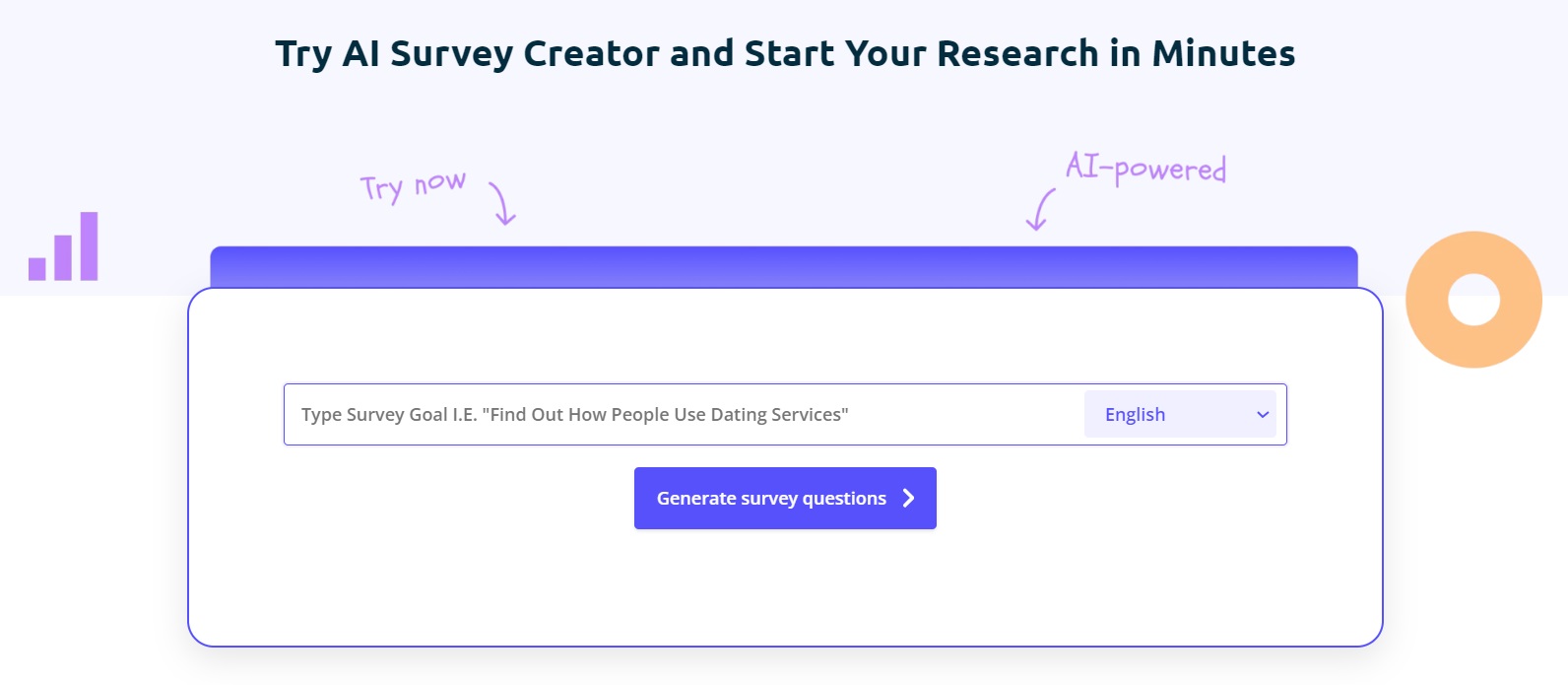
How to Use the Startquestion’s AI Survey Generator?
If you want to create a survey quickly and efficiently, our generator can help. We have a short tutorial that will guide you through the process. Follow these steps to create your survey:
1. Go to Startquestion’s AI Survey Creator.
2. Type your survey goal.
3. Enter a detailed prompt for your research topic. For example, “How students use AI tools?” Choose the language for the survey.
4. Click “Generate survey questions.”
5. Wait.
6. A dozen or so seconds later, the system will generate 10+ questions for you regarding the selected survey topic.
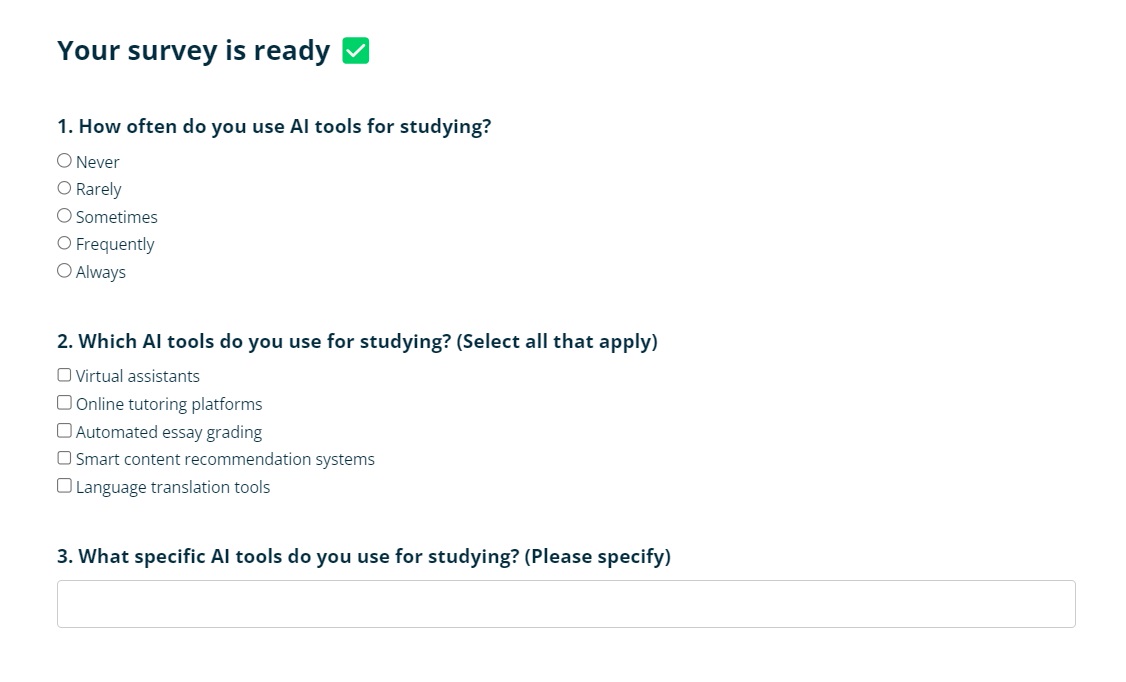
7. Once satisfied with the survey length & design, you can send it to your intended recipients easily and without cost. Click “Create this survey for free” to register for an account.
Signing up is free of charge as well.
Ready to collect honest answers with AI generated survey questions?




